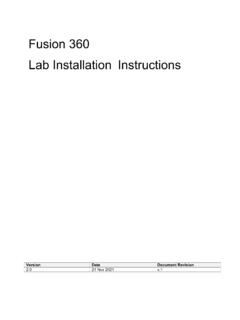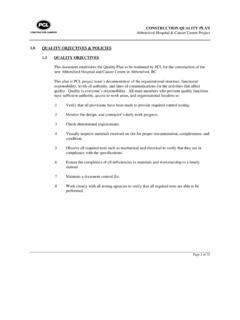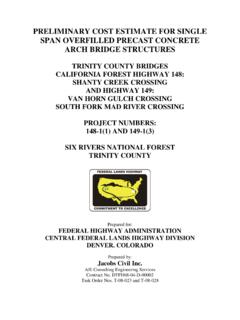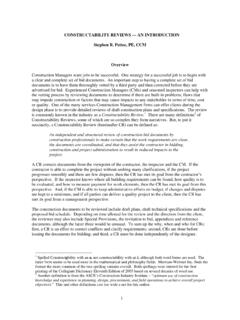Transcription of THE KEY PERFORMANCE INDICATORS OF CONSTRUCTION
1 THE KEY PERFORMANCE INDICATORS OF CONSTRUCTIONSee Ahead Think Ahead Stay AheadResearch conducted in collaboration with Dodge Data & Analytics| Introduction| 7 KPIs of Construction1. Problems Discovered in CONSTRUCTION Documentation 2. Logging RFIs & Responses3. Documenting Change Orders4. Updating the Project Schedule5. Software for Safety & Inspections6. Labor Productivity7. Quality & Close-Out| Let s Compare: KPIs Side-by-Side| ConclusionMany companies use key PERFORMANCE INDICATORS (KPIs) to gauge and compare PERFORMANCE in terms of meeting both strategic and operational goals.
2 However, the CONSTRUCTION industry as a whole lacks objective benchmarks, or a way to measure excellence across the industry. The aim of this eBook is to outline simple KPIs that companies of all sizes can start capturing today by using technology that digitizes this information and collects it in a central area. The comprehensive analysis of this data across the industry will help improve processes and lead to better PERFORMANCE and project delivery. One reason for the absence of industry benchmarks is the lack of centralized data necessary to establish standards.
3 All contractors using digital technology to manage their CONSTRUCTION projects are generating data and information; however, many say they lack a single place to aggregate that information and knowledge of how to use it in a meaningful way. Having the ability to analyze data, such as project information around requests for information (RFIs) and change orders, not only provides useful context, but also enables contractors to understand patterns of issues in their building commissioned a study with Dodge Data and Analytics to survey more than 200 contractors and trade professionals in order to identify and analyze current processes for planning and executing projects.
4 The study revealed seven key process INDICATORS that companies say are especially useful to interpret overall PERFORMANCE . The findings suggest that by adopting specific processes for project management, contractors can reduce risk, thus minimizing downstream problems and improving PERFORMANCE . The following summary of the report covers seven categories of project activities, including:1. Problems discovered in CONSTRUCTION documents2. RFIs3. Change orders4. Schedule5. Safety/Inspections6. Labor productivity7.
5 Quality and close-out Read the key findings and see how your company measures up. INTRODUCTIONAUTODESK || THE KPIS OF CONSTRUCTION || 37 KPIs of ConstructionIn this section, we look at the frequency, value, and difficulties related to errors, omissions, and/or constructability issues discovered in the bid set of CONSTRUCTION documents in order to understand how many contractors are capturing this information and how frequently. More importantly, we look at reporting and how this information is being compared against past similar projects and used to conduct risk reduction | PROBLEMS DISCOVERED IN CONSTRUCTION DOCUMENTS54% frequently* capture errors omissions and constructability issues discovered during the bid set of CONSTRUCTION 47% of respondents frequently compare errors, omissions and constructability issues in CONSTRUCTION documents to past STATS.
6 Of those respondents who are capturing errors, omissions, and constructability issues and comparing them to past projects, 66% are using the findings to mitigate risk on future ones. While it s important to capture issues on current projects, it s equally critical to set up standard processes to compare them to past projects. Why aren t companies recording this data? Just over 50% of general contractors (44% of trades) said the biggest obstacle to capturing this information is how time-consuming or expensive it is, and about one quarter feel they don t have an easy way to do it.
7 However, only 14% of all respondents who are frequently capturing this information on more than half of their projects reported a high/very high degree of difficulty doing so. It seems that once companies get past those initial barriers of cost and adoption, capturing and reporting this information in a succinct way becomes part of their standard operating procedure.*Frequently = on over 50% of their projectsOf those capturing and comparingGC/CMSTRADES55%36%AUTODESK || THE KPIS OF CONSTRUCTION || 53 | The findings in this section address the collection and documentation of change orders, including turnaround time, root cause evaluation, and schedule RFIS & RESPONSES 2 |NOTABLE STATS: 73% of respondents are logging RFIs and responses on over half of theirprojects.
8 Trade contractors more frequently report RFIs to senior management aspotential sources of risk, at 75%, versus 64% of general contractors. Contractors not digitally logging RFIs and responses see the value init, but they find that the obstacles, such as difficulty in adopting andcost of investing, prevent them from implementing the technology andprocesses to support these activities. A study conducted by SMACNA, Making RFIs More Effective, noted thatdesign-build projects where the general contractor closely collaborateswith engineers and architects tend to have far fewer RFIs and resultantchange orders.
9 This is mostly seen in GMP where design intent iscommunicated, but contractors and trades have freedom to design formaximum productivity outcome. Using historical data to identify the root cause of the RFI and measuringtime to receive a response can help contractors see where the potentialbreakdowns in communication are occurring between teams, aidingthem in implementing more efficient practices on future questions in this section sought to determine how frequently respondents log RFIs and responses and how that information is being compared to past similar projects and used to conduct proactive risk create a log of RFIs and 30% are comparing RFI data from past projects36% are Trade Contractors26% are General ContractorsAUTODESK || THE KPIS OF CONSTRUCTION || 63 | The findings in this section address the collection and
10 Documentation of change orders, including turnaround time, root cause evaluation, and schedule CHANGE ORDERS3 |NOTABLE STATS: 64% of respondents typically collect and document change orders on over half of theirprojects, with general contractors capturing this information at a frequency 10% higher thantrades. This trend continues through other data points around capturing root cause, scheduleimpact, etc. If the general contractor has a change order log, some trades may not seethe need to keep one of their own.
















